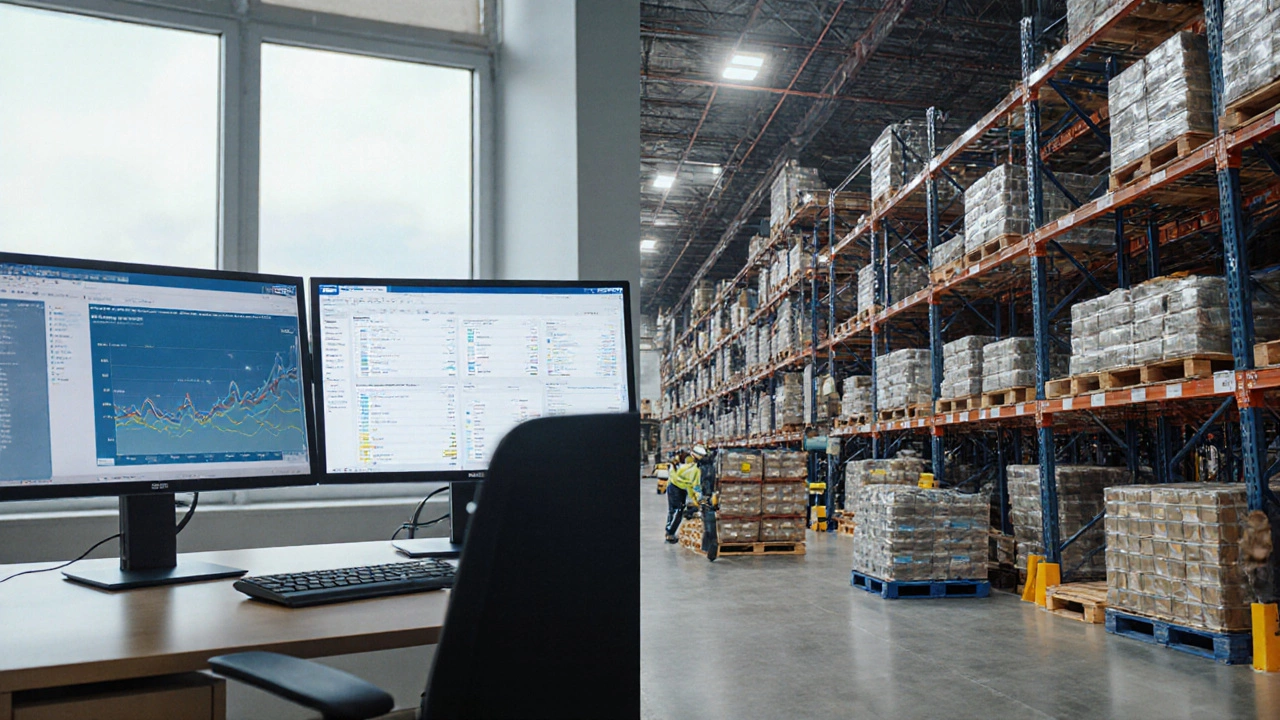WMS: Your Quick Guide to Warehouse Management Systems
Ever wonder what a WMS actually does? In plain terms, it’s software that helps you keep track of everything inside a warehouse—stock levels, locations, movements, and orders. Think of it as the brain behind the shelves, making sure the right products are where they need to be, right when they’re needed.
Without a WMS, you’re juggling spreadsheets, phone calls, and manual counts. That works for a tiny storeroom, but as soon as you have dozens of SKUs and multiple shipping docks, the chaos multiplies. A good system cuts errors, speeds up picking, and gives you real‑time visibility.
What is a WMS and Why It Matters
A WMS sits between your inventory and your people. It records each item as it comes in, tells workers where to store it, and updates the count the moment a product leaves. The result? Fewer misplaced pallets, shortened order‑to‑ship times, and better use of space.
Most modern WMS platforms also talk to other tools—like transportation management systems (TMS) or e‑commerce platforms—so data flows automatically. That means you can see an incoming order on your website, have the warehouse know exactly what to pick, and let the carrier know when it’s ready for pickup—all without manual entry.
Choosing the Right WMS for Your Business
Start with the basics: list the features you can’t live without. Do you need barcode scanning, real‑time dashboards, or integration with a specific ERP? Next, think about scale. A cloud‑based solution can grow with you, while an on‑premise system might be cheaper for a static operation.Don’t forget to test the user experience. If the warehouse staff finds the interface clunky, adoption will suffer. Look for a vendor that offers a sandbox demo or a trial period so you can see how it handles your actual workflows.
Cost is another big factor. Some providers charge per user, others per transaction or per pallet slot. Compare total ownership costs—not just the license fee—but also implementation, training, and ongoing support.
Finally, check references. Ask the vendor for case studies from businesses similar to yours. Real‑world results—like reduced picking errors by 30% or faster order fulfillment—show the system can deliver on its promises.
At StockOne Logistics, we’ve helped dozens of companies pick and roll out the right WMS. Whether you’re a small retailer or a national distributor, the right system can turn a chaotic warehouse into a smooth, data‑driven operation.
Ready to explore your options? Browse our related posts, such as “What Does WMS Mean? Warehouse Management System Explained (2025 Guide)” and “Warehouse Solution Explained: Key Features, Benefits, and How to Choose.” They dive deeper into feature lists, cost breakdowns, and step‑by‑step selection guides.
In short, a WMS is more than just software—it’s the foundation for efficient, reliable logistics. Pick the right one, train your team, and watch your inventory accuracy and shipping speed improve dramatically.
What is WMS in logistics? A simple guide to warehouse management systems
A warehouse management system (WMS) is essential software for tracking, organizing, and shipping inventory efficiently. Learn how WMS works, why businesses need it, and what to look for when choosing one.
Read MoreTop Modern Warehouse Technologies in 2025
Explore the latest warehouse technologies-robots, drones, IoT, cloud WMS, and more-and learn how they boost speed, accuracy, and scalability in 2025.
Read MoreSAP ERP vs WMS: What It Really Is
Explore whether SAP functions as an ERP, a WMS, or both, and learn how to choose the right SAP solution for warehouse operations.
Read MoreWMS vs ERP: Key Differences Explained
Learn the key differences between Warehouse Management Systems (WMS) and Enterprise Resource Planning (ERP) systems, when to use each, and how to integrate them for seamless logistics.
Read MoreWho Uses Warehouse Management Systems? WMS Users Explained
Discover who actually uses a Warehouse Management System. From ecommerce giants to local suppliers, uncover the real faces and facts behind WMS adoption.
Read MoreWarehouse Management Software: Which Platform Gets the Job Done?
Choosing the right warehouse management software can level up your entire operation by making inventory tracking, order processing, and reporting way easier. This article digs into popular software options, what features really matter, and the risks of skipping a real WMS. There are also tips on customizing your setup, integrating with other business tools, and even some overlooked hacks that actually save you time. If you want no-nonsense advice on which warehouse software suits your needs, you’ll find it here.
Read MoreWarehouse Software: What Is It Called and Why Does It Matter?
Warehouse software, often referred to as Warehouse Management System (WMS), is crucial for efficiently managing inventory, orders, and logistics within a warehouse. These systems help businesses streamline operations, minimize errors, and optimize storage space. Understanding different warehouse software options can lead to better decision-making and enhanced productivity. By learning key features and benefits, businesses can implement the most suitable solution for their needs.
Read MoreChoosing the Right Warehouse Management System for Your Business
Warehouse Management Systems (WMS) enhance inventory management by automating functions and improving accuracy. This article explores the popular WMS choices, their performance in the market, and tips for selecting the best fit for your operations. Insights on costs, integration capabilities, and user-friendliness are also provided. Understanding these systems could streamline your warehouse operations, reduce errors, and boost productivity.
Read More






